Ethnoecology of pollination and pollinators: Knowledge and practice in three societies
Art. (in English) in Revue d’ethnoécologie vol. 7, 2015
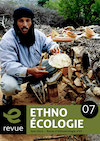
A first title for this paper was: “Pollination viewed by Ethnoecology: Human Knowledge, Human Practices”,
Roué, Marie, Vincent Battesti, Nicolas Césard & Romain Simenel, 2015 — “Ethnoecology of pollination and pollinators: Knowledge and practice in three societies”
Revue d’ethnoécologie, 2015 (7)
Online: http://ethnoecologie.revues.org/2229
DOI : 10.4000/ethnoecologie.2229
PDF File: https://hal.science/hal-01175523
This article was written especially to meet the needs of an expertise work for IPBES. The IPBES is the Intergovernmental Platform on Biodiversity and Ecosystem Services. I am one of the numerous Expert Reviewers for an assessment report (in progress) on “Pollinators, pollination and food production”. This article develops some views on the issue of pollination with ethnoecology contributions.
– Abstract:
This paper brings together three case studies on the interrelationships amongst people, pollination processes and pollinators (notably honeybees). In the palm groves of Saharan oases, the milieu and varieties of palm trees are created by horticulturalists, who fulfil themselves the role of pollinators. In southern Morocco, entire landscapes, including in particular the agroforests of argan trees, are the products of a remarkable symbiosis between bees and people. In Indonesia, honey harvesters have an exacting local knowledge of the giant honeybees and the timing and nature of blooms. They use this knowledge to attract migratory swarms and to decide the optimal moment to harvest honey so that the bees are incited to return.
The authors, specialists in social system/ecosystem interactions, decided to pool their expertise so as to render more accessible their research results, which are often dispersed amongst journals specialized in different cultural areas. By focusing their analyses instead on an important biological phenomenon threatened by human action (in this case, pollination), they hope that their audience will also include biologists, policy makers and environmental managers. Given the growing diversity and complexity of threats facing biodiversity, the responses proposed by conservation biology alone are often inadequate. To understand the dynamics of anthropo-ecosystems, the outcomes of a long co-evolutionary process involving a wide range of living beings, an interdisciplinary approach is mandatory. Conservation and sustainable use cannot be achieved without an understanding of local people’s knowledge and practices, a prerequisite for establishing in partnership with them, protection measures that are both respectful and locally adapted.
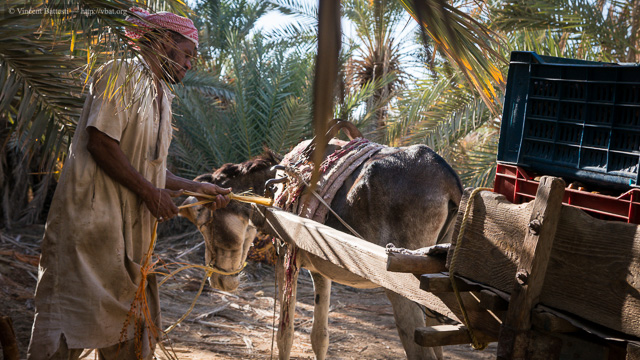
- Dans la palmeraie d’Abregani, Oasis de Siwa, Égypte
– My own contribution in this article:
My own contribution in this coedited article is especially about the case of the date palm (Phoenix dactylifera L.).
Of course, pollination is an essential process of reproduction of plants. Human activities have sometimes introduced historically so much changes in the environment that the process of pollination, and the condition itself of the reproduction, has been deeply transformed. This was the case with the cultivation of date palm (Phoenix dactylifera L., Arecaceae), a diecious anemophilous plant of old domestication in the Middle East, which is unknown in the wild, but of which the culture is deeply rooted in human history. This plant is the keystone of these oasian systems, very elaborated artificial agroecosystems being created and maintained in the desert by human societies. The date palm artificial sex ratio option taken by all oasian societies implies to derogate from a “normal” wind pollination. So, they had to invent a hand-pollination as a substitute.
– In pictures, different steps for the preparation of the palm date pollen for hand-pollination in Siwa oasis (Egypt):
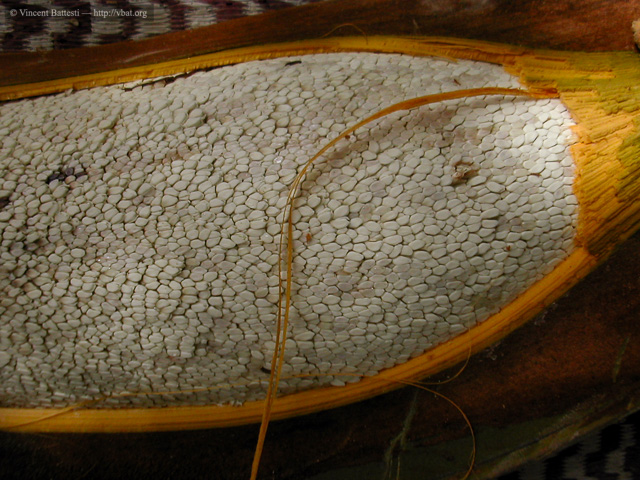
- Preparation of the pollen for the hand-pollination of the date palm (Phoenix dactylifera L.) in Siwa oasis (Egypt).
March 28th, 2004, © Vincent Battesti
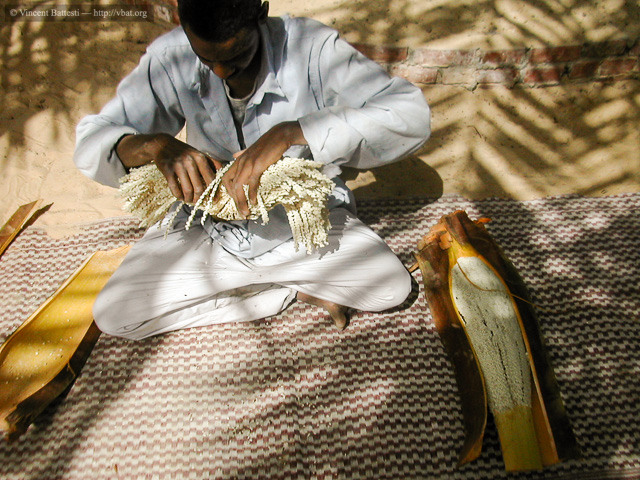
- Preparation of the pollen for the hand-pollination of the date palm (Phoenix dactylifera L.) in Siwa oasis (Egypt).
March 28th, 2004, © Vincent Battesti
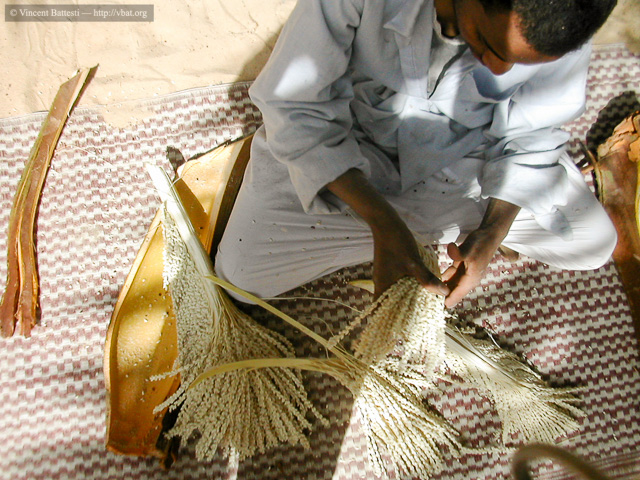
- Preparation of the pollen for the hand-pollination of the date palm (Phoenix dactylifera L.) in Siwa oasis (Egypt).
March 28th, 2004, © Vincent Battesti
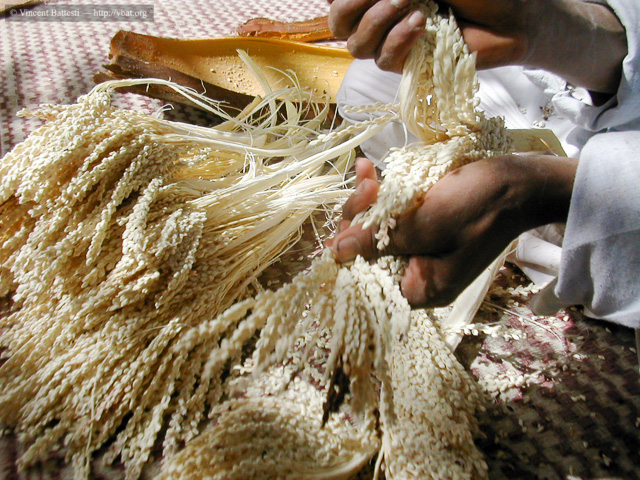
- Preparation of the pollen for the hand-pollination of the date palm (Phoenix dactylifera L.) in Siwa oasis (Egypt).
March 28th, 2004, © Vincent Battesti
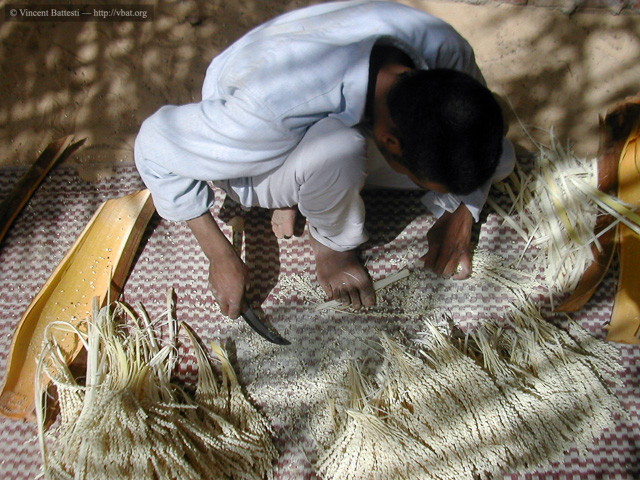
- Preparation of the pollen for the hand-pollination of the date palm (Phoenix dactylifera L.) in Siwa oasis (Egypt).
March 28th, 2004, © Vincent Battesti
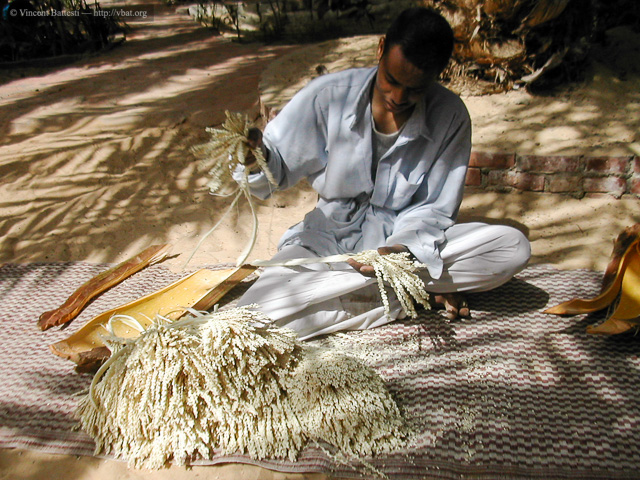
- Preparation of the pollen for the hand-pollination of the date palm (Phoenix dactylifera L.) in Siwa oasis (Egypt).
March 28th, 2004, © Vincent Battesti
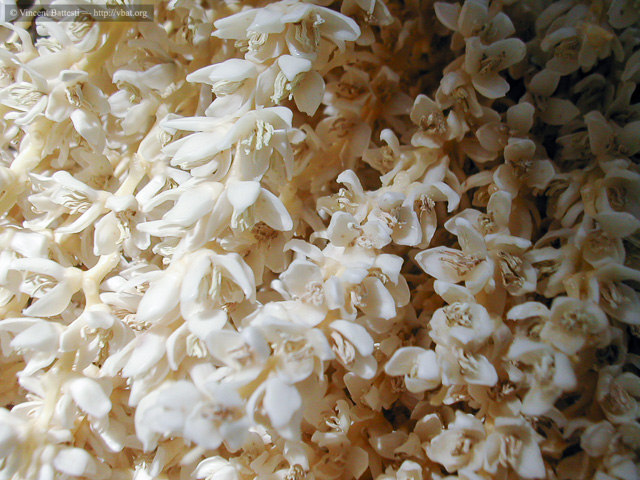
- Preparation of the pollen for the hand-pollination of the date palm (Phoenix dactylifera L.) in Siwa oasis (Egypt).
March 28th, 2004, © Vincent Battesti
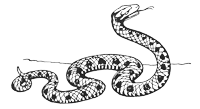

 vbat.org
vbat.org


